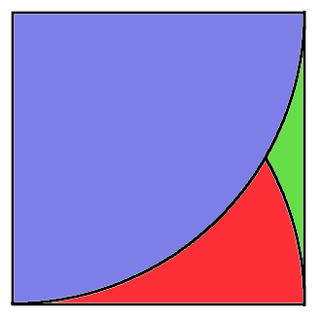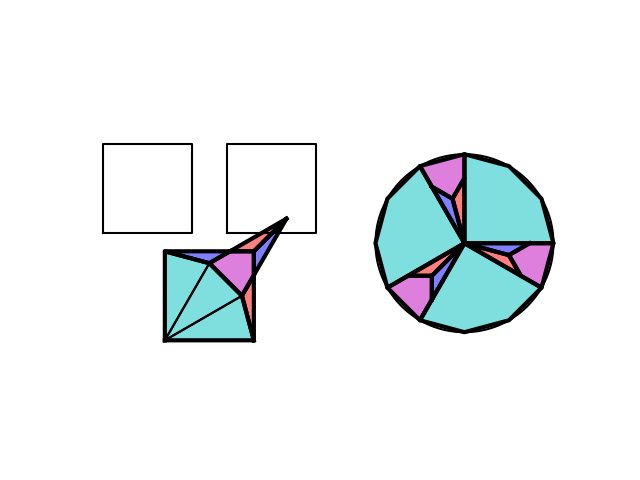It seems that once upon a time some politicians tried to pass a law fixing the value of π to be exactly 3. The idea being to "make math simpler so that our children can get better at math".
Don't let this happen.
The area of a disk is given by A = πr². If you take r = 1 you have A = π. Prove that A > 3 by fitting 3 unit squares on a disk with unit radius. Cut the three squares into a finite number of pieces and place these on the disk without overflow, without overlap, and with some space left.
Minimize the number of pieces.
Banach–Tarski-like tricks are not allowed. ;-) The solution should be practical enough to squeeze three toasts on a round plate or three slices of square cheese on a pizza.
(this puzzle is my own creation)








